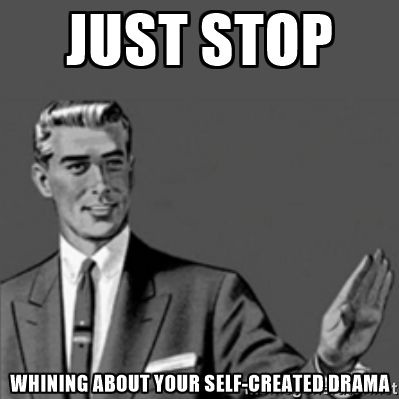On one side stands the Fairview mayor of the 11,000-resident Dallas-Fort Worth town, and on the other stands the Church of Jesus Christ of Latter-day Saints. The latter wants to build a temple to perform the increasing number of baptisms, weddings and other sacraments for a rapidly growing membership in the region. At issue is how high the Utah-based faith can build its McKinney Texas Temple next to an existing LDS church on Stacy Road, a site neighboring Baptist, Methodist and non-denominational places of worship near Highway 75 in North Texas.
After more than a year of heated city council meetings and arguments over zoning laws, the LDS Church and the Fairview Town Council reached a non-binding agreement to avoid legal action in November. They agreed that the church would reduce the temple to 35-foot-tall from 65-feet and the spire down to 120-foot-tall from 174-feet. A compromise was made, with both sides conceding to the project's total footprint from about 45,000 square feet to 30,000 square feet.
The LDS Church said it was ready to submit a revised temple application by the Jan. 13 deadline. However, its leaders soon grew wary that the town wouldn't follow the terms. So, Eric Pinker, a Dallas-based attorney for the church, delivered an official "intent to sue" notice to Fairview that same day.
"The Church has no confidence that the Town will make good on its commitments," Pinker wrote in the letter addressed to Fairview Mayor Henry Lessner and Planning Manager Israel Roberts. Pinker accused the town of violating the church's right to free exercise of religion and nondiscrimination of land use.
At a public information session in December, town officials "referred to the Church in negative ways, characterizing it as a bully, asking local residents to communicate concerns about the 'scaled down' Temple to Utah," Pinker said. And in the town's January newsletter, Lessner said that "through our attorneys, we have told them that there is a good chance that the new design with the 120 foot tower will not be accepted."
The LDS Church, Pinker continued, has repeatedly asked Lessner if it could meet with city councilors to discuss the temple project. "The Church has done everything it can to avoid that possibility, but if Town authorities are unwilling to abide by their agreement, then it will have little choice," Pinker said.
In another letter dated Jan. 27, Pinker asked the Fairview mayor and planning manager for town documents (emails, letters, memos, etc.) related to the LDS Church's temple proposal and zoning laws. "While it continues to be the Church's hope that this matter can be worked out amicably, in the face of continued and unreasonable opposition, it appears the Church has no choice but to defend its rights in court," Pinker said.
The potential legal battles come as the LDS Church has been expanding its presence in Texas. It has at least 10 temples that are built, under construction or have been announced in Houston and in other cities across the state. Texas has about 385,000 LDS Church members, an increase of about 210,000 in 2000. About 6.8 million total members live in the U.S., and the church has about 17 million members worldwide.
In recent interviews, LDS Church members have told me that God had instructed their president Russell Nelson, a 100-year-old prophet, as they put it, to announce in 2022 that a temple would be built in Prosper, Texas. Two months later, Nelson moved the temple's location roughly 18 miles southeast to Fairview.
Shirley Swartz, a 65-year-old member of the LDS Church who lives about two miles from the proposed temple site in Fairview, has expressed frustration over the town's treatment of the religious project. "People can build churches everywhere, but every time you have an LDS church or temple going up, there will be problems," Swartz told me in December. "If the Baptists or Methodists want to build a church, we don't mind. We should be able to build what God wants us to build there. For people to go against that, it's very un-Christ-like."
But opponents believe the temple and its towering spire would draw droves of tourists and traffic, obstruct the skyview and potentially lower their property rights. "We don’t see this as a compromise that would be harmonious for our peaceful community," Alycia Kuehne, a 57-year-old Fairview resident, told me via email last week. "The residents would gladly welcome the LDS temple if they could bring the height [of the spire] down to the current precedent … The church has worked within the zoning ordinances in other cities across Texas, why are they unwilling to work with Fairview? My only conclusion would be that we are a town of 11,000 and we don’t have the financial means to fight a 260 billion dollar corporation." (The Salt Lake Tribune recently reported Ensign Peak, an investment firm for the LDS Church, manages the faith's global assets estimated at $265 billion.)
LDS Church elders said they didn't know exactly when the religious organization would file a suit against Fairview but remained convinced they'd win the case due to Texas' laws protecting religious freedom. Meanwhile, Mayor Lessner has told me the Fairview City Council set up a Zoning Defense Fund to defend itself against the LDS Church. "Put simply, the LDS church is attempting to force the Town to accept a Temple and steeple that would dominate the Town due to its size and is totally out of proportion to the surrounding residential area," the town writes on its site. "If this issue goes to court, we would be David fighting Goliath."
The LDS Church has gone to court in other states with city governments which opposed its temple projects, according to the Tribune. It won a suit against Cody, Wyoming, in August 2024. A month later, LDS elders broke ground on the 9,950-square-foot structure there.
https://www.chron.com/culture/religion/article/lds-church-temple-fairview-lawsuit-20145085.php

